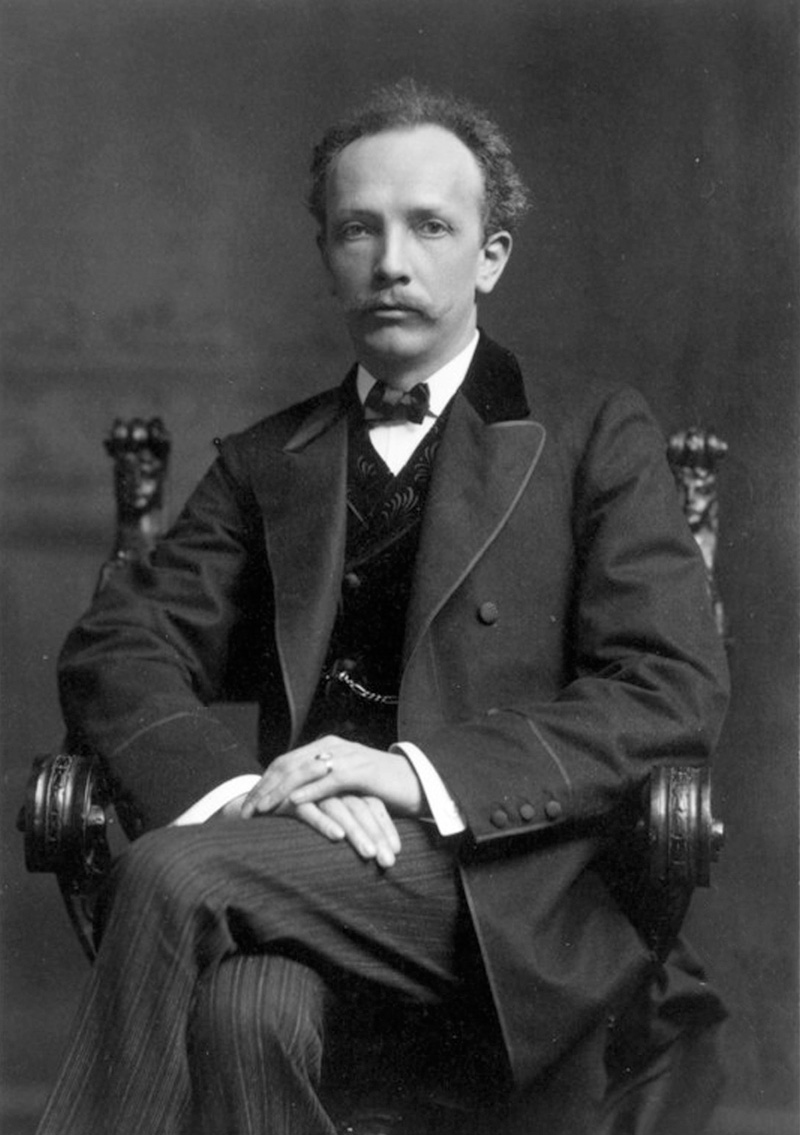Richard Strauss

- Born: June 11, 1864, Munich
- Died: September 8, 1949, Garmisch-Partenkirchen
“Sunrise” from Also Sprach Zarathustra (“Thus Spake Zarathustra”)
- Composed: 1896
- Premiere: November 27, 1896, Frankfurt; Richard Strauss led the Orchestra of the Museum Concerts
- Duration: approx. 35 minutes
Although each of Richard Strauss’ tone poems—Macbeth, Death and Transfiguration, Don Juan, Don Quixote, Till Eulenspiegel, Ein Heldenleben, Also sprach Zarathustra—was inspired by what he called “a poetical idea,” he never described the programmatic elements, plots or “meaning” of these works in any detail, preferring to let critics and scholars contend over such matters. (Of Till Eulenspiegel, he once said, “Let them guess at the musical joke that the Rogue has offered them.”) Strauss approved almost all of these efforts (they were, after all, good publicity, and Strauss—and his very large income—thrived on publicity), so the latter-day reader is left with often contradictory evidence.
Such is the case with Also sprach Zarathustra, which was derived, in some manner at least, from the universal vision of Friedrich Nietzsche’s poem (left unfinished at his removal to a mental hospital in 1889). Strauss provided titles for the nine continuous sections of the piece, but attempts to equate them with specific passages from the poem have been largely unconvincing. The truth of the matter seems to be that Strauss’ music and Nietzsche’s poem share little more than a title and a few pretentious ideas. Strauss’ Also sprach Zarathustra is a musical composition and not a philosophical tract.
One possible way to view Also sprach Zarathustra was given by Strauss himself in a letter to his friend Otto Florscheim at the time of the work’s Berlin premiere:
“I did not intend to write philosophical music or to portray in music Nietzsche’s great work. I meant to convey by means of music an idea of the development of the human race from its origin, through the various phases of its development, religious and scientific, up to Nietzsche’s idea of the Superman. The whole symphonic poem is intended as my homage to Nietzsche’s genius, which found its greatest exemplification in his book Thus Spake Zarathustra.”
Although its philosophical associations are tenuous, there has never been any doubt about the expressive powers of this music. (It was the Budapest premiere of Also sprach Zarathustra that convinced the young Béla Bartók to devote his life to composition.) The sections of Strauss’ tone poem mirror several strong emotional states, as indicated by the following program note (authorized but not written by the composer) that appeared at the work’s premiere:
"First movement: Sunrise, Man feels the power of God. Andante religioso. But still man longs. He plunges into passion (second movement) and finds no peace. He turns toward science, and tries in vain to solve life’s problems in a fugue (third movement). Then agreeable dance tunes sound and he becomes an individual, and his soul soars upward while the world sinks far below him.”
Three motives unify the work. The first, a unison call by four trumpets based on the most fundamental pitches in the musical spectrum—C-G-C—heard immediately at the outset, is the theme of Nature. The second motive is a sinister theme, perhaps depicting Fate, introduced by the trombones in the section Of Joys and Passions. The third is the conflict between the tonalities of C—representing Nature—and B, which stands for Man’s Aspirations. The unsettled struggle between these two polarities (the technical term is bi-tonality) is most clearly heard at the close of the work, but it occurs throughout.
Though Strauss supplied individual titles for the nine sections of Also sprach Zarathustra, the work is performed continuously. It opens with one of music’s greatest fanfares—a tonal depiction of a radiant sunrise, based on the Nature theme proclaimed by unison trumpets. (The unforgettable image that director Stanley Kubrick supplied for this music in his film 2001: A Space Odyssey could not have been more appropriate.)
—Dr. Richard E. Rodda